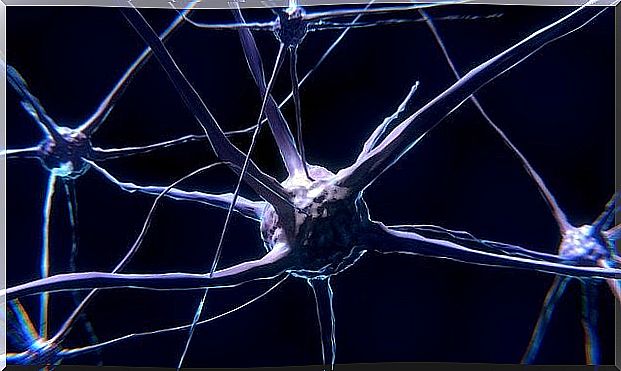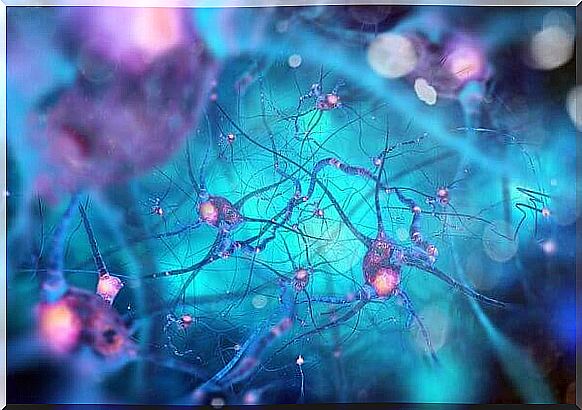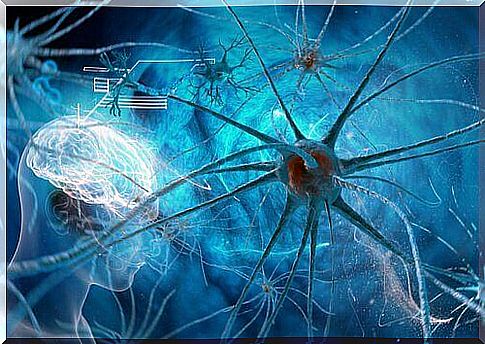Neurons In The Brain: What Are They And How Do They Work?

Neurons, or nerve cells, are the basic functional unit of one’s nervous system. Our behavior and our perceptions have everything to do with how neurons in the brain work and interact with their “partners”. These small nerve cells are the biological part of our psychology. They are the basis of all our feelings and thoughts.
Before we move on, you should know that all neurons have the same genetic information as the rest of the cells in your body. They also have the same basic elements in their structures (membranes, nuclei, organelles, etc.)
What makes them so special compared to other cells is the place they occupy in our neural networks. This is what enables them to perform basic processes such as receiving, managing and sending information.
To understand what these neurons in the brain are, we must learn about their structure and its synaptic functions. Both of these things will help you understand why they are grouped the way they are and how they send information into your brain. So today we will talk about the structure of neurons and synapses.

The structure of the neuron
There are some many types of neurons with different structures, but there are still some common elements. The normal structure consists of three basic parts: soma, dendrites and axons. This set helps them fulfill their roles as connectors and information managers.
Before we explain the three parts, it is worth mentioning a strange thing concerning the membrane of a neuron. It is not permeable in the same way as the other cells in the body. In fact, it is this that allows it to respond to the stimuli that surround it. This is the reason why the impulses created in a neuron can travel to other cells or tissues.
Parts of the neuron
The central part of a neuron is called the soma. This is where the metabolic activity happens. Soman is where the nucleus is located, along with other microstructures and cellular organs that keep the neurons alive.
The dendrites are the branches that protrude from the soma and make it look like a tree. This is where most of the information is received. Dendritic trees have branches that connect a neuron to the axons of other neurons and communicate with them.
The neurons can send information because the dendrites have neuroreceptors along their membranes. Even when the communication is mostly axon-dendrites, there are also other types (axon-axon or axon-soma).
The axons come out of the soma, from the wider part called the “axon hillock”. This part receives the information received by the neuron so that it can pass it on at a later time. At the end of the axon we have the axon terminals. They connect the dendrites to other neurons.

Synapses, or neural communication between neurons in the brain
When you understand what the structure of neurons looks like, you must also understand how they communicate with each other. It communicates with each other through synapses. Communication usually occurs through an axon-dendritic connection, but as previously mentioned, it can also happen in other ways.
At a morphofunctional level, communication can occur either with a chemical synapse or an electrical one. There are various electrical synapses, especially in muscle tissue, but most synapses in a mammal’s nervous system are chemical.
There are structures called connexins that are involved in the electrical synapses. It is ionic channels that bring the neurons together and make it possible to carry an electric current between them.
The advantage of this synapse compared to the chemical ones is that it sends the information much faster. The disadvantage is that the quality and capacity of the information is significantly lower than with the chemical ones.
When it comes to synapses, there are substances called neurotransmitters or neuromodulators (such as dopamine). It is the axon terminal that stores these substances, and they wait until they receive orders to transfer.
A deeper study of the structures and synapses of neurons can help explain these processes. And thanks to research, neuroscience has been able to understand more about neuronal mechanisms for learning, perception, emotions and much more.







